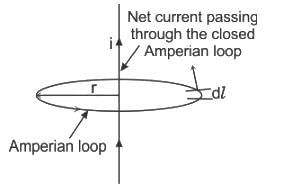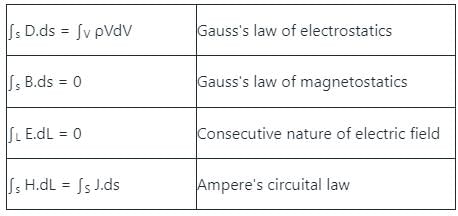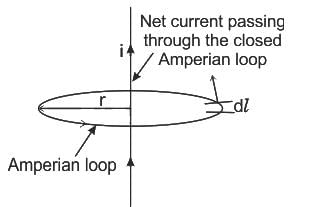NCERT Based Test: Ampere's Circuital Law - NEET MCQ
10 Questions MCQ Test Physics Class 12 - NCERT Based Test: Ampere's Circuital Law
A long straight wire in the horizontal plane carries a current of 75 A in north to south direction, magnitude and direction of field B at a point 3 m east of the wire is
If a long straight wire carries a current of 40 A, then the magnitude ol the field B at a point 15 cm away from the wire is
The correct plot of the magnitude of magnetic field  vs distance r from centre of the wire is, if the radius of wire is R
vs distance r from centre of the wire is, if the radius of wire is R
Ampere's circuital law states that _______.
Two parallel conductors carrying current in opposite directions will exert on each other
Which of the following statement is correct regarding Ampere's circuital law?
I. The law can be applied inside a conductor or outside it but total current enclosed by the path should be known
II. The law is applicable for line currents, sheet currents or volume currents
A long wire carrying a certain current produces a magnetic field of 0.8 Tesla at a distance 0.5 cm. Then magnetic field at a distance of 1 cm is:
Match the following mathematical representations with their corresponding law:
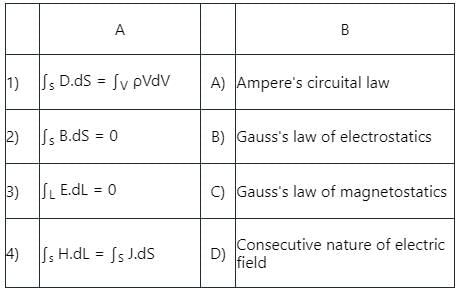
Ampere's circuital law involves finding the _________.
|
98 videos|334 docs|102 tests
|


 around any closed path in free space is equal to absolute permeability of free space μ0 times the total current flowing through area bounded by the path.
around any closed path in free space is equal to absolute permeability of free space μ0 times the total current flowing through area bounded by the path.
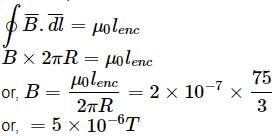

 = 5.34 x 10-5 T
= 5.34 x 10-5 T